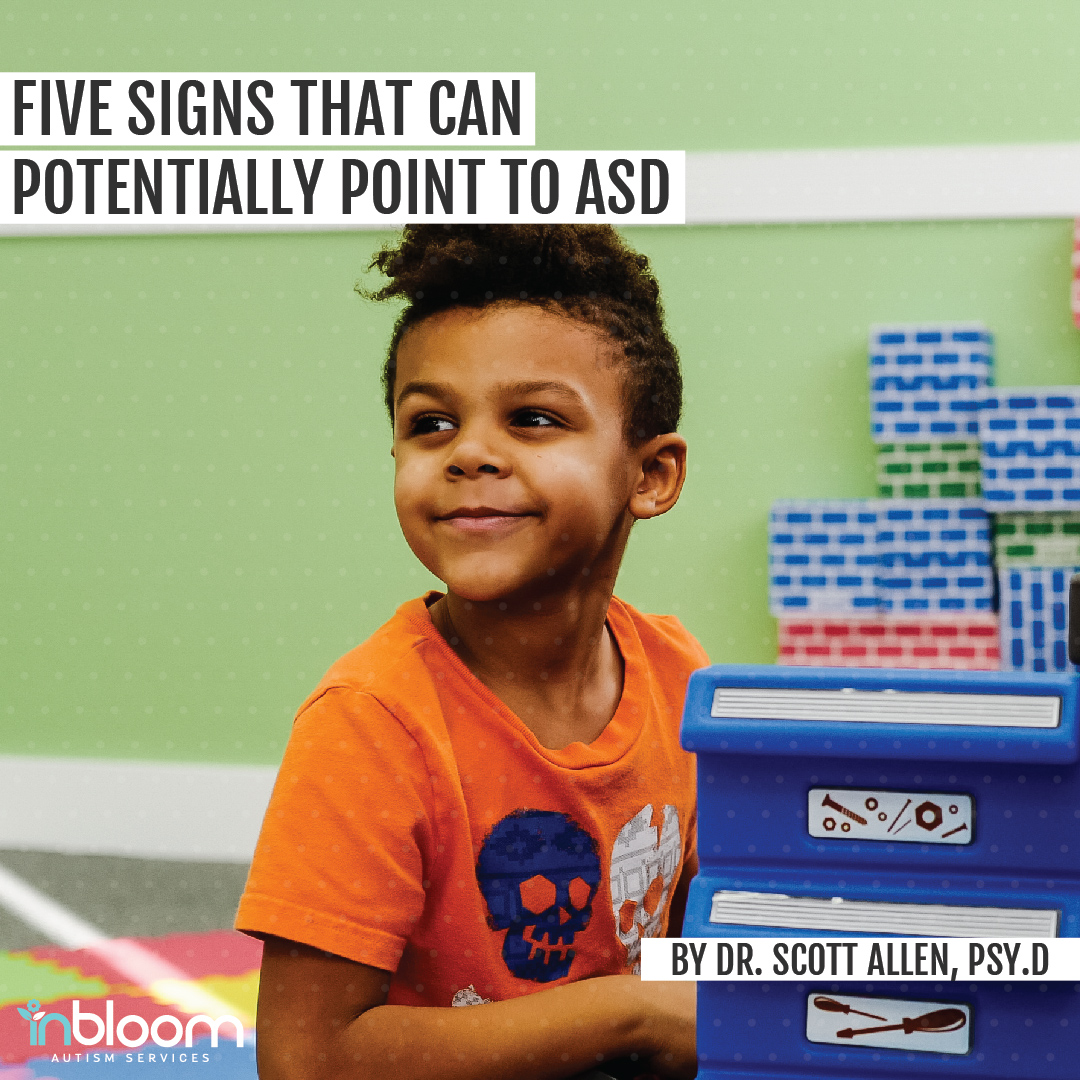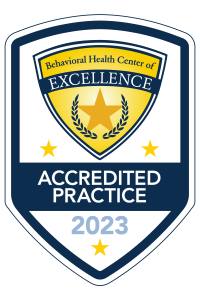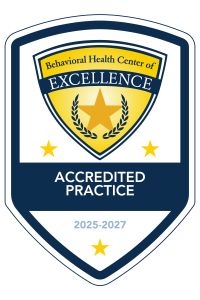5 Signs That Can Potentially Point to Autism

At InBloom, and across my career, I’ve worked with many individuals with autism spectrum disorder (ASD) in many different capacities. Although the old adage “if you’ve seen one person with autism, you’ve seen one person with autism” holds true – I’ve noticed signs over the years that tend to be more highly correlated with an autism diagnosis than others.
Some developmental and behavioral challenges that are often associated with autism are picky eating, tantrum behaviors, or delayed speech development. Although that can be applied to many neurotypical children or those with more generalized delays. There is no single symptom or behavior that identifies all individuals with ASD, but some seem to more consistently lead to a diagnosis than others. Here is a list of Five Signs That Can Potentially Point to Autism.
5 Signs That May Point to Autism Diagnosis
1. Nonverbal Communication
In most children that I have diagnosed over the years, there have been significant delays in nonverbal communication including gesturing and pointing. As we go through life daily, our verbal communication is nearly constantly interwoven with nonverbal communication strategies. Most experts assert that the vast majority of human communication is nonverbal in nature.
By age 18 months, most typically developing toddlers have a range of gestures that they can utilize to convey different meanings. When I don’t observe any pointing or gestures during an assessment that is usually a strong indicator for a diagnosis of potential autism spectrum disorder.
2. Unusual Eye Contact
All children differ in the frequency at which they direct eye contact with adults or other kids. There is a natural range of comfort with eye contact. We see this range in the adult world; some adults tend to look toward other people more often than other adults. Eye contact serves as a way to connect with other people and it is among the first skills to be observed in neurotypical infants.
When evaluating a child for diagnosis, I don’t just look at the presence or absence of eye contact. I’m also looking at the purposes of eye contact and how it appears. Humans, as social beings, have a natural attraction to the eyes of other humans. When eye gaze is not observed, even during what would typically be a highly motivating time (such as requesting, seeking comfort, etc.), I may suspect autism.
3. Low Social Engagement
For younger children, we hope to see some social interest and engagement with both family members and those who are not in the family. If a family reports taking a child to a playground or a swimming pool and they are more interested in the plants, repetitive behaviors in the water, or specific items in the environment than they are with other children, then there is support for an ASD diagnosis. For younger children with ASD, we often see a lack of social interest. For older children, we often see interest in other children but more challenges with social boundaries and social communication.
Seeing possible signs of autism in your 18 months to 3 years old? Click here to schedule an autism diagnostic assessment or call us at 888-754-0398.
4. Limited Physical or Vocal Imitation
Most humans are “hardwired” to imitate others. As we are constantly learning, imitation is one of the primary ways we expand upon our communication and behavior. Most neurotypical children imitate their caregivers and peers readily, whether they are instructed to do so or not. They may imitate people on television or animals in books.
When a child struggles with imitation when instructed to do so or does not show spontaneous imitation, I view this situation as a red flag. Imitation is one of the foundational skills upon which an ABA program is often built for good reason. Without limitation, it would be challenging for any learning to take place.
5. Unusual Toy Play
Everyone has different interests and these different interests are one of the aspects that make each of us unique. Usually, when I am completing an assessment for children with ASD, I have a variety of toys and activities to engage them. When I observe kiddos who are not interested in any of the toys, are more interested in non-toy items, or have highly specific toy interests. Such as looking at the sheen of a block or consistently waving the ladder of a fire truck. There is support for an autism diagnosis. In some children, I’ve observed very limited play with parts of toys, such as spinning an airplane’s propeller. In others, I’ve observed interest in tablet devices or other toys to the point that they need to be moved out of view so testing can be completed.
Early Detection is Key for Early Intervention
Although one of these signs, in itself, is not indicative of autism spectrum disorder, if multiple signs are observed, diagnostic assessment may be warranted. This list is also not comprehensive and many other behaviors/skills are assessed in a full evaluation for an autism diagnosis. A full autism assessment consists of a structured observational measure, a detailed developmental history, information about day-to-day functioning, and an exploration of collaborative sources of information. Using the collection of data, a diagnostic determination can be made.
How to Schedule an Autism Evaluation for Your Child
If your kiddo exhibits some of these behaviors and you would like a diagnosis, InBloom offers comprehensive autism diagnosis services administered by a Licensed Clinical Psychologist. We currently provide this service for children between the ages of 18 months and 3 years old in the following states: Arizona, Colorado, and Texas.
In addition to the areas mentioned previously in this blog, the autism evaluation also focuses on the following areas:
- A thorough parent interview focused on obtaining information about each child’s history and day-to-day functioning.
- Structured observations of each child’s behavior, including the administration of the ADOS-2.
- Detailed, parent-friendly reports including a diagnosis (if any) and recommendations.
- A feedback session provides parents with the opportunity to have a conversation about each child’s assessment results, diagnosis, and recommendations.
CLICK HERE TO SCHEDULE A DIAGNOSTIC EVALUATION
Written by: Dr. Scott Allen, PSY.D
————————————————————————————————————–
InBloom Autism Services specializes in early intervention ABA Therapy. Our Therapists undergo training to develop a curriculum specifically designed for children aged 5 and under with autism. Our Learning Centers also offer a safe and enjoyable environment for children to interact with their peers. Find a Learning Center near you!



